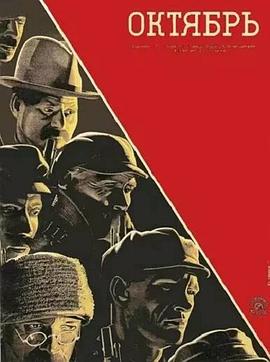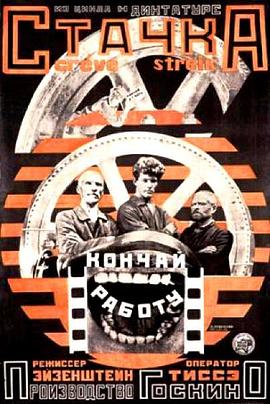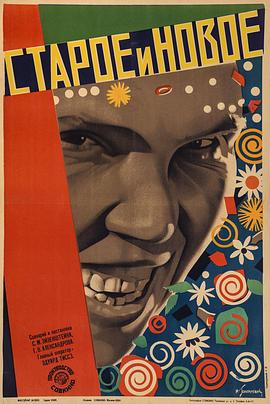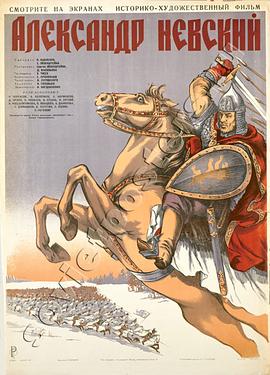谢尔盖·爱森斯
搜索"谢尔盖·爱森斯",找到5部影视作品
导演:
/谢尔盖·爱森斯坦
主演:
剧情:
影片发生在1905年,一艘名为波将金号的战舰上,原本这是一艘沙皇海军的骄傲,可是因为连续数月的伙食太差,导致了一场哗变。沙皇海军波将金号战舰上,水兵的生活环境非常差,受着非人的待遇。一连数月,水兵的伙食很差,供应的牛肉甚至长满了蛆,引起了战舰上水兵们的极度不满。部分水兵策动起义,却受到了军官的镇压。指挥官下令枪杀叛乱者,但是由于起义之火在众人心中燃烧。行刑队拒绝开枪,起义者们拿起武器将军官丢入大海。波将金号被起义者们夺取,并驶入敖德萨石阶进行补给。敖德萨的群众对水兵们的遭遇非常同情,义愤填膺,纷纷声援起义的水兵。而群众的声援却遭致沙皇军队的镇压,一场血腥的屠杀就此展开……
导演:
/格里高利·亚历山德罗夫,谢尔盖·爱森斯坦
主演:
剧情:
1927年,为纪念十月革命十周年而拍摄的纪录风格影片,片中群众角色很多为当时参与十月革命的工人和士兵,当时起义的领导之一Nikolai Podvolsky也参与演出一名布尔什维克(此公是十月革命十周年庆典组委会的主席,正是他向爱森斯坦委约了这部影片)。脚本参考了美国记者里德(John Reed)的新闻体纪实著作《震撼世界的十天》(Ten Days That Shook the World)。此片和《战舰波将金》、《罢工》一样,同为爱森斯坦二十年代探索蒙太奇剪辑的代表作。 通常上映的版本配乐,采用了苏联作曲家肖斯塔科维奇的交响作品和小品。
导演:
/谢尔盖·爱森斯坦
主演:
剧情:
本片为苏联电影理论家兼导演爱森斯坦的处女作,用六个章节展示了一场罢工运动的始末。 繁忙的工厂里,工人们埋头工作。布尔什维克党在地下积极组织工人罢工,但表面上仍然一片平静……工厂里的一把工具失窃,当值工人被厂主调查侮辱,气忿不过的工人回到车间,上吊自杀。工人们与厂主爆发了冲突,工人冲出工厂,打倒工头,联络其他工厂的同志,一场大规模的罢工启动了。 工厂主与工人们的谈判陷入僵持,失去生活来源的工人们忍饥挨饿,工厂主又雇佣侦探抓捕工人领导、借助流氓势力破坏工人组织。在水龙和骑警的驱逐下,工人们四处奔逃,最终遭到血腥屠杀……
导演:
/谢尔盖·爱森斯坦,格里高利·亚历山德罗夫
主演:
剧情:
Due to some common interests between German and Russian aristocracy ( the Russians even had aristocrats in their past not to mention they had an Empress called Catherine the Great, as great as this German count's heiresses… ), it is not strange that this Teutonic count has understood and even enjoyed Herr S. M. Eisenstein's "Staroye I Novoye". It is not very usual that for the aristocracy to enjoy Bolshevist films full of proletarian demands that put private property at risk or as it happens in this case, a film about the Communist Party's policy on the subject of the collectivization of the Soviet agriculture. Normally this would be perfect gibberish for this German count, but thanks to Herr Eisenstein 's greatness and directorial talent, the hardships of the heroine of the film, Dame Marfa ( Dame Marfa Lapkina ) breached even the thick aristocratic Schloss walls. And that's one of the first remarkable aspects of this oeuvre; in spite of the political subject of the film, the powerful images and lyricism ( astonishing and beautiful shot compositions ), especially during the first part of the movie, preserve the artistic merits entirely while serving a propaganda purpose. The second remarkable aspect of the film is the dichotomy between the old and new, the fight to improve the lot of Dame Marfa and her countrymen. There are many discussions because it is not easy even in Russia to change ancient and conservative customs. There are superb metaphors and social criticism ( illiteracy, bureaucracy, religiosity ) which perfectly fit the film, and last but not least, "Staroye I Novoye", is a kind of archaic documentary about ancient customs established deeply in old Russia, those ones that our heroine must fight against. And there is also a lot about agriculture ( very enlightening for this German count), especially about harvesting and how to fatten Russian cows or pigs ( literally, no pun here… ). Herr Eisenstein had to bear during the last era of his film career, unbelievable censorship and mutilation of his work, as happens with "Staroye I Novoye". The film was reedited and Eisenstein accused of sympathizing with Trostky's policies but fortunately the film was restored and showed by the German-frenchified t.v. channel "ARTE", natürlich!, including an evocative music score by Herr Taras Bujewski, that fits superbly Herr Eisenstein primal artistic interests. And now, if you'll allow me, I must temporarily take my leave because this German Count must buy a tractor for one of his Teutonic heiress.






